July 13, 2025
"We want to be the trusted source when it matters most" The Journey to Achieving No.1 Forecast Accuracy in Japan for Three Consecutive Years
Weathernews is a personal weather information service operated by Weathernews Inc., accessible through both web and mobile applications. Our weather app has surpassed 48 million cumulative downloads, serving countless users who rely on our forecasts daily. We are absolutely committed to delivering "accurate weather forecasts," and this dedication has paid off—we achieved No.1 forecast accuracy in Japan for three consecutive years (2022-2024) in independent third-party evaluations of weather forecasting services.
In this article, we spoke with meteorologist Tatsuya Unozawa from our Forecast Center, who has been at the forefront of improving forecast accuracy. He shares insights into the initiatives, challenges, and trial-and-error processes that led to this remarkable achievement.
"Trust built through daily accuracy leads to reliability in critical moments" - The foundation of our accuracy improvement efforts
Since around 2017, we have been laser-focused on improving forecast accuracy, driven by our unwavering commitment to "deliver more accurate weather forecasts."
The smartphone revolution transformed how people access weather information. With weather apps and websites now at everyone's fingertips, users can check the latest forecasts anytime, anywhere. As weather forecasts became deeply woven into people's daily routines, we recognized a crucial responsibility: we needed to build rock-solid reliability in our everyday forecasts so that when "critical moments" strike—such as natural disasters—people could trust our information without hesitation.
This vision of making everyone's lives richer and safer became the driving force behind all our accuracy improvement efforts.
Efforts to improve precipitation detection rate to reduce "missed rain" that greatly impacts daily life
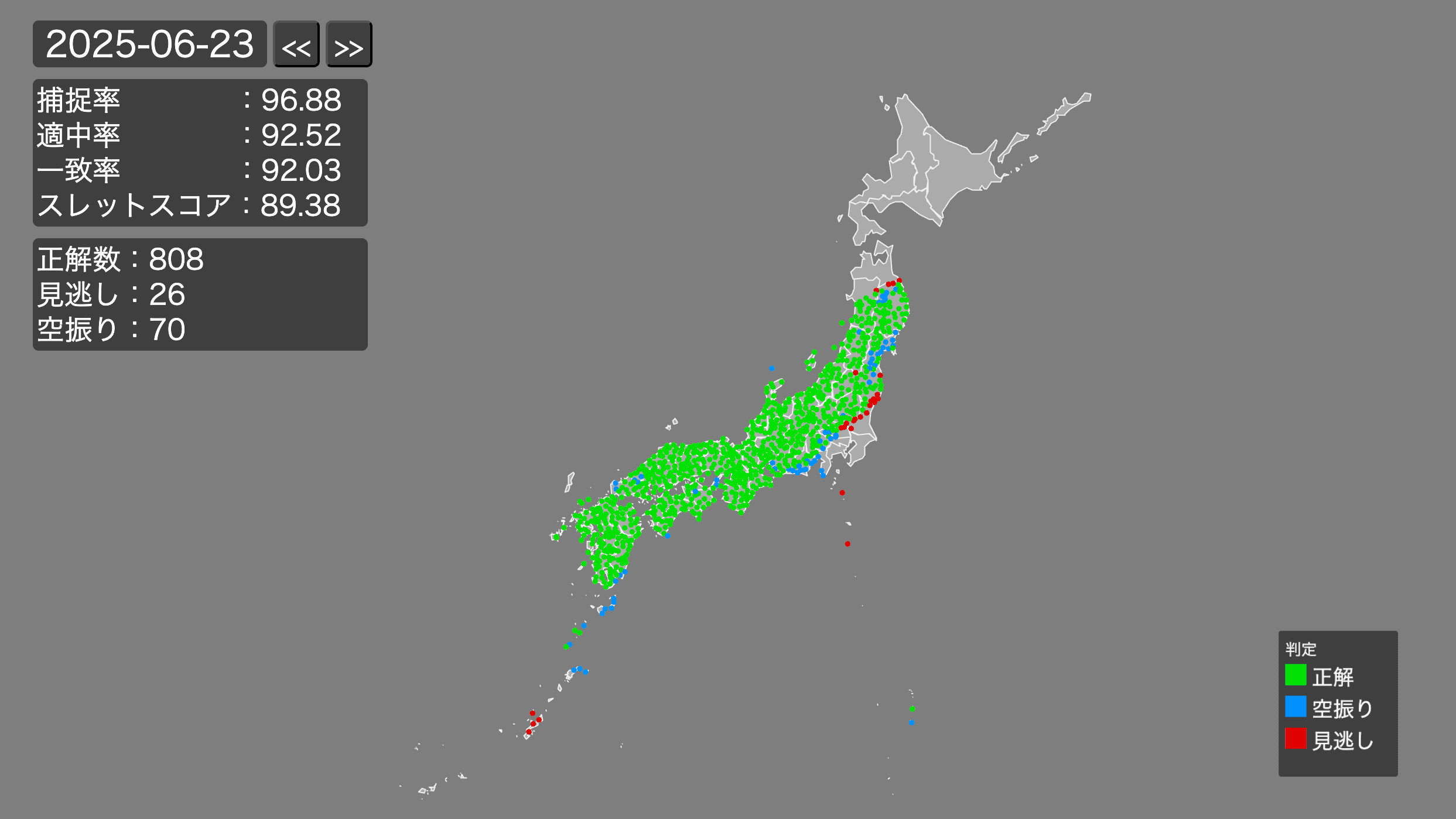
Everyone has probably experienced "getting caught in sudden rain" or "regretting leaving laundry out to dry." Our first priority was addressing what impacts people's daily lives most: not missing rainfall—in other words, improving our precipitation detection rate.
At Weathernews' Forecast Center, we create weather icons based on meteorological prediction model calculations and deliver weather forecasts to users through our apps and websites.
To improve precipitation detection rate, we began by rigorously evaluating our own forecasts. Using evaluation standards published by the Japan Meteorological Agency, we assess the accuracy of weather icons announced at 5 AM each day.
Areas where forecasts missed the mark are plotted on maps, and we conduct thorough analysis to understand "why the forecast was wrong." These insights are fed back to our operational team members and incorporated into subsequent forecasts. We also share findings with our development team, driving system improvements that address our identified weaknesses. The entire Forecast Center collaborated to enhance forecast accuracy.
Through this continuous cycle of evaluation and improvement, we successfully achieved a 90% precipitation detection rate.
Efforts to improve accuracy rate by reducing "false rain forecasts" for high-quality weather forecasts
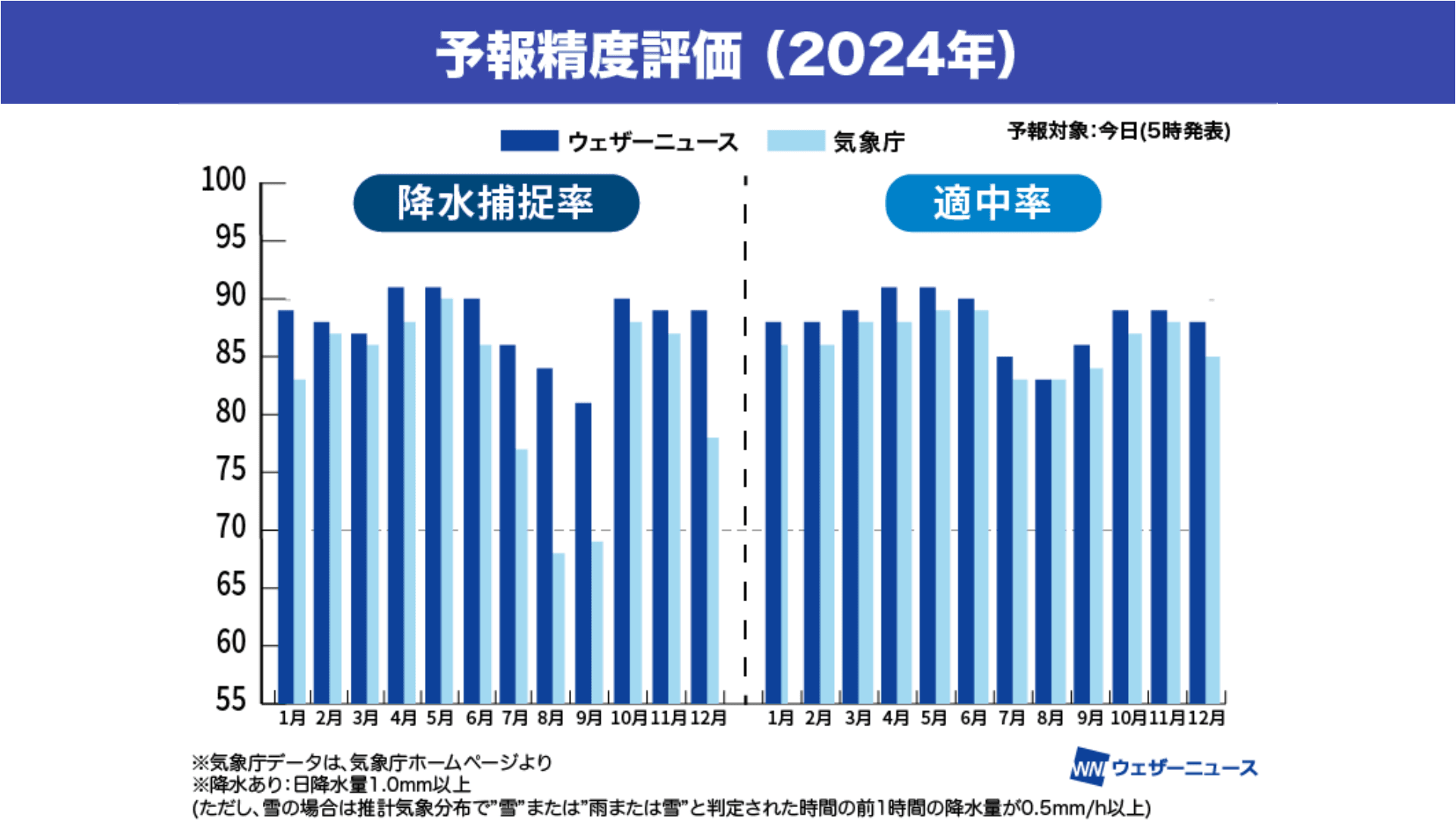
While increasing the precipitation detection rate reduces missed rainfall, it can also potentially increase "false rain forecasts." Therefore, our next focus was improving the accuracy rate.
To put it in extreme terms: if we issued rain forecasts every day, we would never miss rainfall, achieving a 100% precipitation detection rate. However, that wouldn't constitute truly useful weather forecasts for people's daily lives. This is why it's equally important to increase the "accuracy rate"—which evaluates whether it actually rained when rain or snow was predicted, and conversely, whether it stayed dry when no precipitation was forecast.
Similar to our approach with precipitation detection rate, we began evaluating accuracy rates and took on the challenge of maintaining high precipitation detection while not compromising accuracy. We conducted daily weather forecast evaluations and reviewed performance in detail on weekly and monthly bases.
On particularly challenging forecast days, we check each prefecture individually and sometimes modify weather icons accordingly. By determining optimal forecasts for different weather patterns—such as complex conditions when fronts affect Japan or when atmospheric instability generates sudden thunderstorms—we achieved forecasts with both high precipitation detection rates and accuracy rates.
Through this continuous cycle of evaluation and improvement to enhance accuracy, we were first recognized as having No.1 annual weather forecast accuracy by a third-party survey in 2022. We maintained our efforts and earned No.1 forecast accuracy recognition for three consecutive years through 2023 and 2024.
Weathernews' weather forecasts supported by industry-leading observation network and supporter information
Weathernews' weather forecasts are created through a comprehensive approach: an extensive observation network, "Weather Reports" from supporters nationwide, the expertise of experienced meteorologists, and AI that systematizes all these elements.
To improve forecast accuracy, it's essential to first capture "what is happening now" with greater detail and precision. Weathernews utilizes data from a nationwide observation network of 13,000 points, combining the Japan Meteorological Agency's AMeDAS with our own observations. This high-density observation data allows us to capture detailed current conditions and translate them into highly accurate predictions.
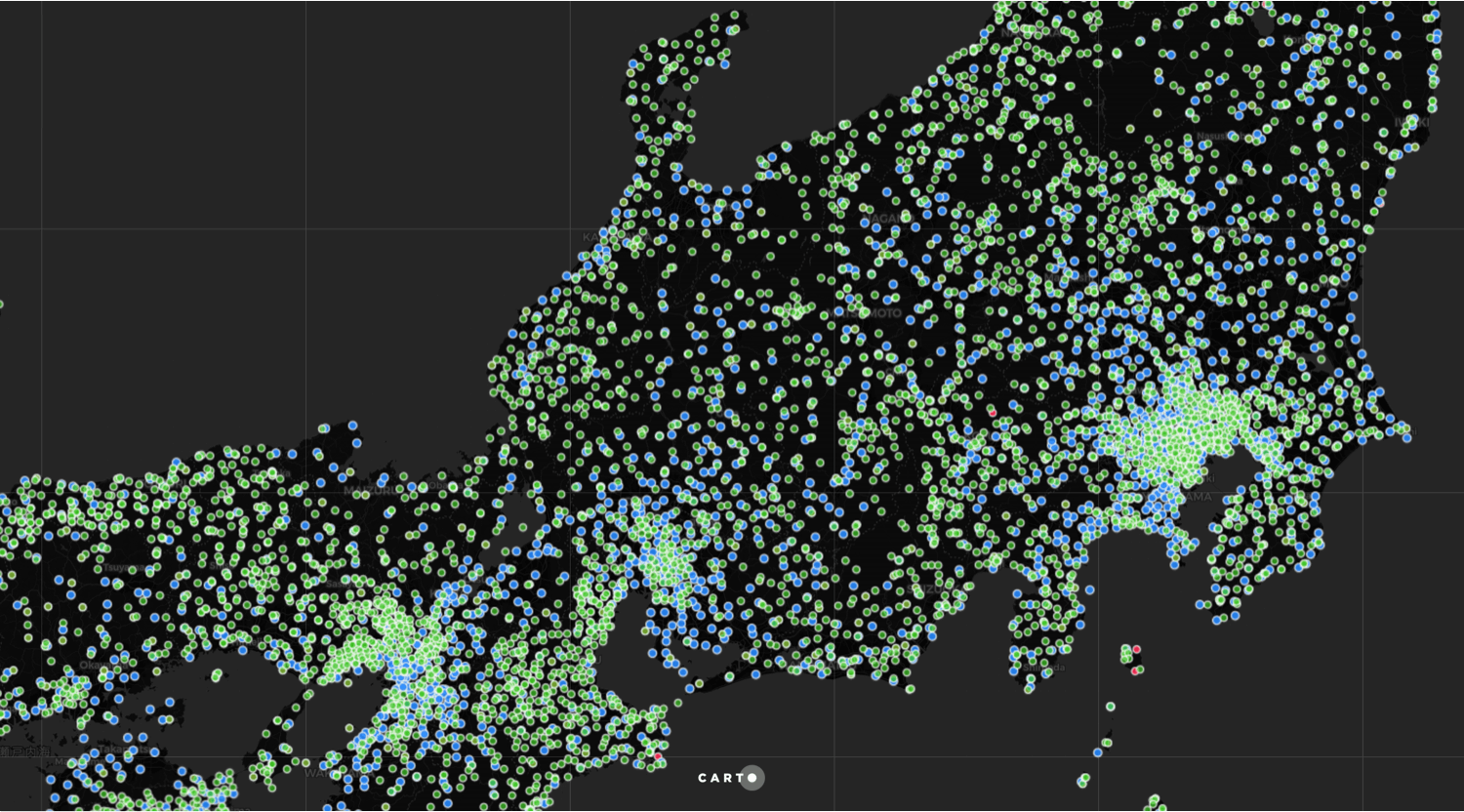
Additionally, we receive approximately 200,000 weather reports daily from users (supporters) nationwide, along with about 30,000 photos and videos of skies and clouds called "Weather Reports." This initiative of crowdsourcing weather information from the general public is rare worldwide and represents Weathernews' original approach. Supporter information helps us understand real local conditions that observation equipment alone cannot capture—such as rainfall from clouds that don't appear on radar, the development of cumulonimbus clouds that bring sudden thunderstorms, and the precise boundary between rain and snow. Since March 2024, we launched an initiative where supporters help install small cloud cameras called "SoraCame," with 2,500 units now deployed nationwide. Our forecast center continuously monitors Weather Reports and SoraCame footage, using them for accurate situational awareness to enhance weather forecast precision.
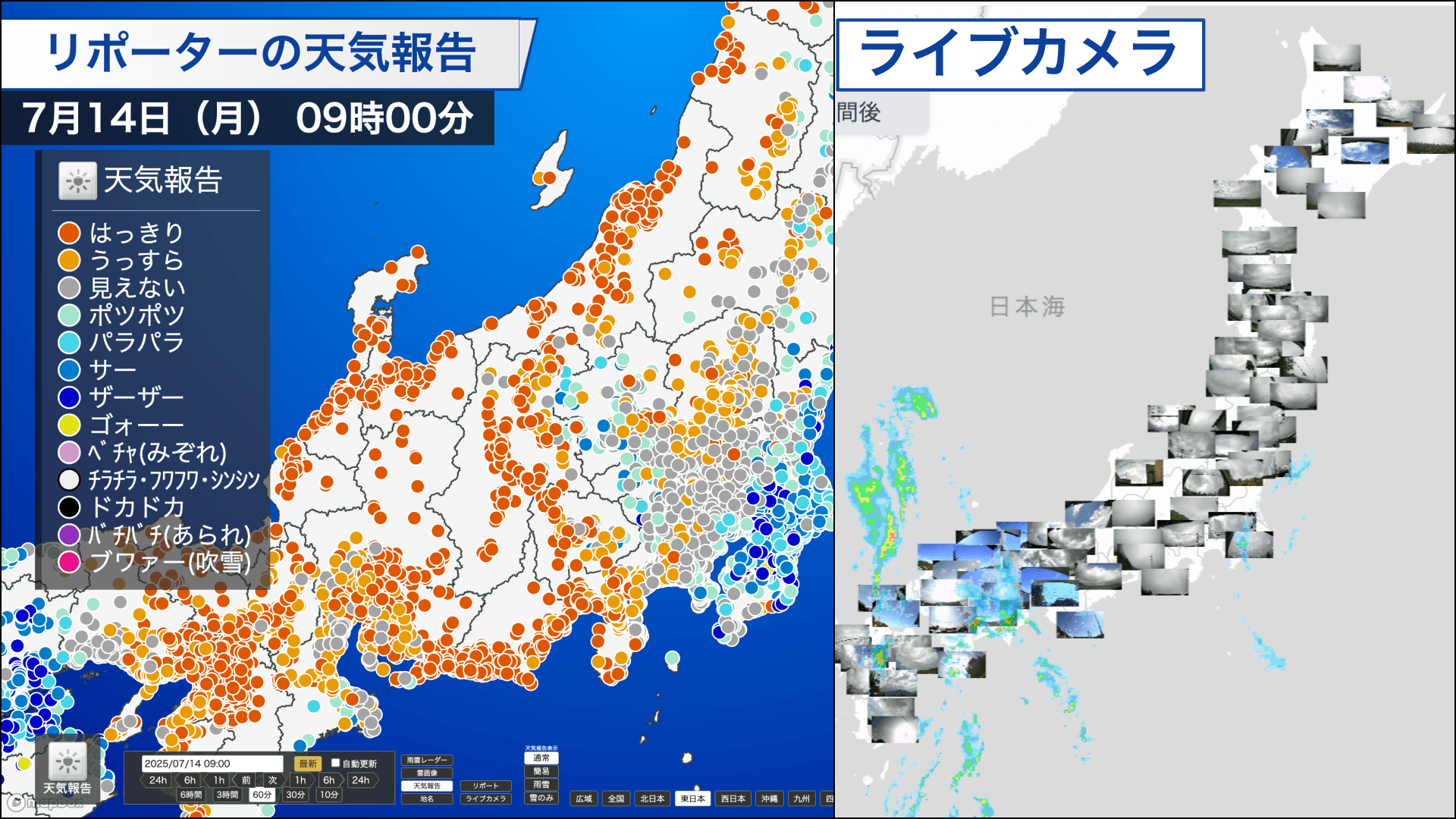
At the forecast center, we construct weather forecasts based on prediction values from our proprietary meteorological prediction models as well as those from the Japan Meteorological Agency and international meteorological services. Each model has its own characteristics and tendencies, producing different calculation results. Our experienced meteorologists evaluate which models are most reliable for specific conditions and determine prediction scenarios. By further optimizing these through AI analysis, we achieve highly accurate weather forecasts.
Weather Reports and supporter contributions are indispensable to Weathernews' forecasting success. We believe that achieving No.1 forecast accuracy for three consecutive years was accomplished together with supporters who consistently submit Weather Reports.
We want to achieve high-quality weather forecasts globally as well
As climate change intensifies meteorological phenomena, the importance of accurate weather information continues to grow. Weathernews has previously collaborated with supporters to tackle meteorological phenomena that were considered difficult to predict, such as sudden thunderstorms. We will continue to push the boundaries of forecast accuracy to provide truly valuable information to everyone.
While we currently hold No.1 forecast accuracy in Japan, we also want to take on the challenge of improving weather forecast accuracy overseas. From a global perspective, Japan stands at the forefront of meteorological disaster prevention and mitigation. We aim to bring Japan's cutting-edge meteorological expertise to the world and contribute to global disaster preparedness.
November 19, 2025
The Weathernews App Becomes Japan's No.1 Weather App! Our Journey to Become “Japan’s Most Used” Weather App
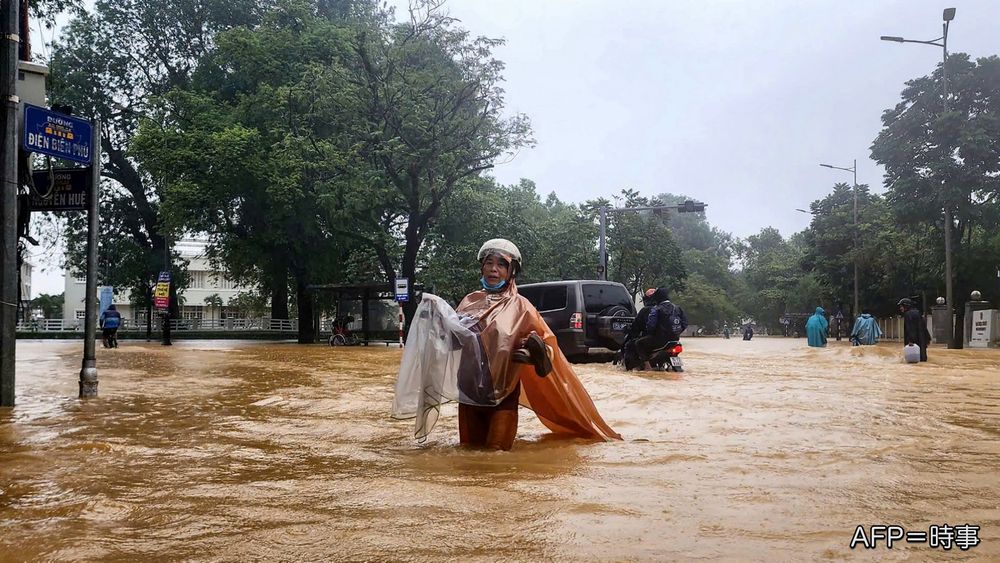
November 17, 2025
Record-Breaking 24-Hour Rainfall Exceeds 1,000mm in Vietnam: A Review of Our Precipitation Forecast Accuracy
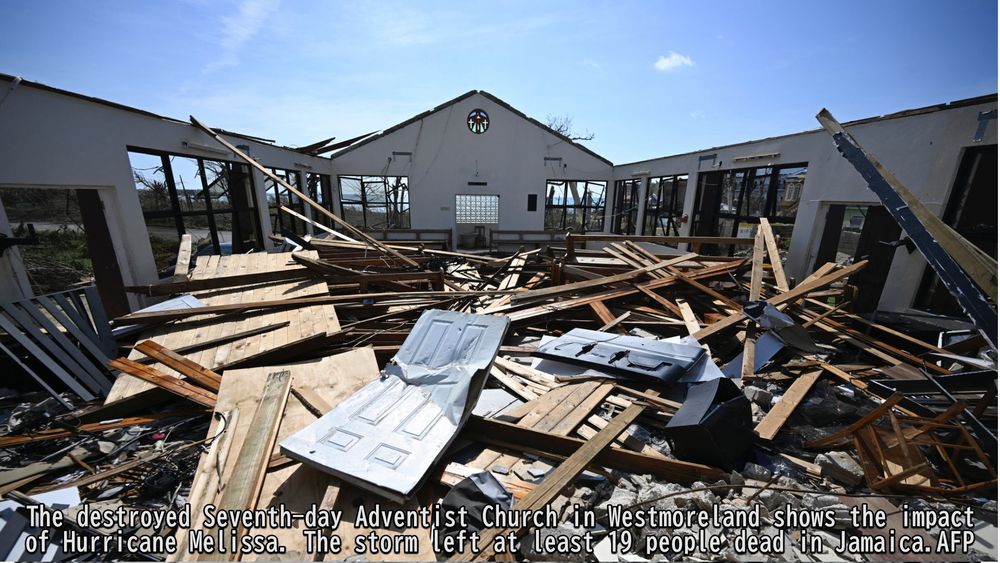
November 13, 2025
Hurricane Melissa: One of the Strongest Atlantic Hurricanes on Record